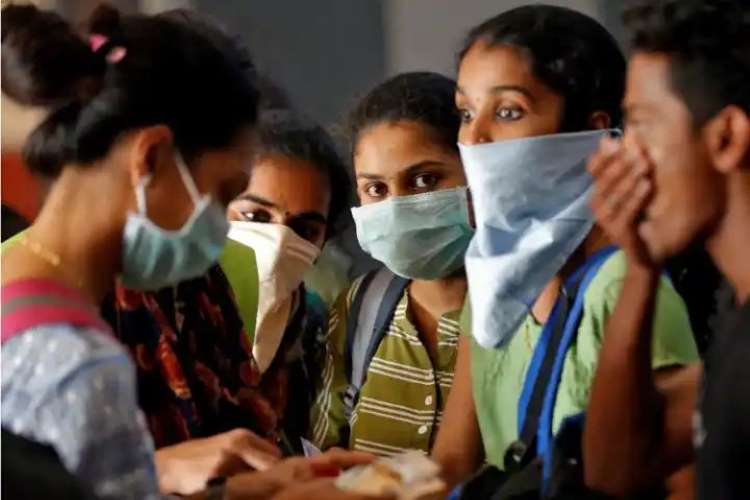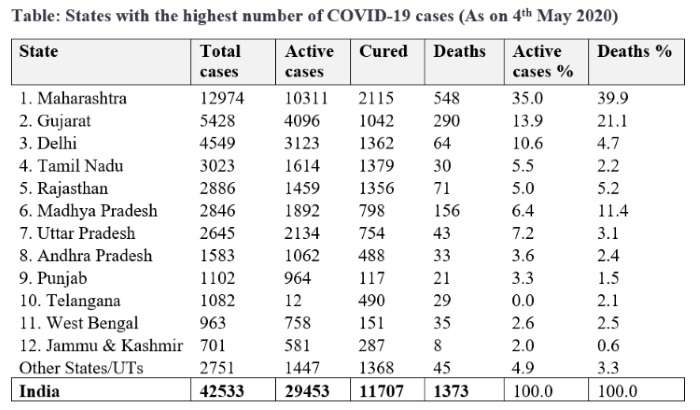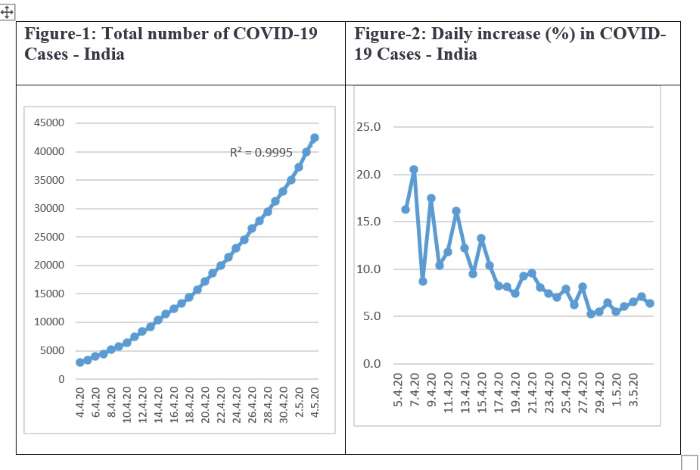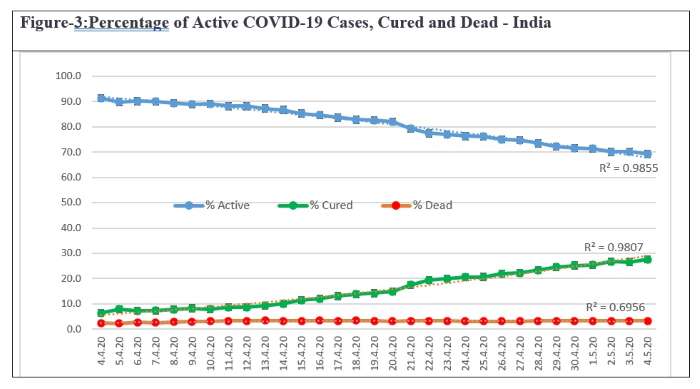
By Rattan Chand
The new coronavirus pandemic has spread to 212 countries. It has affected 3.58 million people, resulting in 2,50,000 deaths till May 4 and the number is increasing by the day. Globally, around 61% of the total confirmed cases are active, 32% have recovered and 7% have died. In India, the total number of Covid-19 cases is 42,533 as on May 4, of which 69.2% are active cases, 27.5% have recovered and 3.2% have died.
States and Union territories are in the forefront of fighting Covid-19. Already, the disease has spread to 34 States / UTs, though not to all districts. As on April 30, out of the 733 districts in the country, 130 districts were classified as red zone, 319 districts as green zone and the rest 284 as orange zone. Districts with zero confirmed cases till date or districts with no confirmed case in the last 21 days have been categorized in green zone. A district is classified as red zone based on the total number of active cases, doubling rate of confirmed cases, extent of testing and surveillance feedback. The remaining districts that are in neither red nor green zones are classified under as orange zone. Lockdown relaxations varies from green to red zone. The classification will be updated by the ministry of health and family welfare every week or earlier as required.
READ: Government must enlist help of experts, NGOs in fight against recession
Around 50% of active Covid-19 cases and deaths have occurred in two States — Maharashtra and Gujarat (see Table). Further, around 95% of the active cases and 97% of the death belong to 12 states, whereas in the remaining 24 States / UTs, there were only 5% of active cases and 3.3% deaths. Notably, Maharashtra, Gujarat and Madhya Pradesh, the percentage of deaths is quite high compared with the corresponding percentage of active cases. The reason for higher proportion of deaths in these states needs to be looked into.

Figure 1 shows that the total number of Covid-19 cases increased significantly from 2,901 to 42,533 during the one month from April 4. However, the percentage daily increase in Covid-19 cases has been coming down during the period (Figure-2). This indicates that the lockdowns have been effective in containing the increase in number of Covid-19 cases. The data also indicate that the doubling time of the number of cases which used to be 5-6 days earlier has now increased to 12-13 days.

Figure 3 presents the percentage of Active Covid-19 cases, percentage of cured and percentage of dead (out of the total Covid-19 case) for the month beginning April 4. It is interesting to note that the percentage of active Covid-19 cases has come down from around 90% in the beginning of April to 69% by May 4. On the other hand, the percentage of cured cases has gone up from 6% to 27.5%. The percentage of deaths has more or less remained around 3.2% during the last 15 days.
READ: How India lost out to China, rest of Asia in development race
The big question is whether this trend of decline in ‘active cases’ and increase in ‘cured cases will continue or will it be disturbed due to the relaxations given by the government in the third lockdown to carry out various economic activities. It is not known whether the social distancing and other norms, which have been effective in controlling the spread of Covid-19, will continue to be observed strictly by the public or not? Initial indications are that some of the people are not behaving responsibly in following the government guidelines and this may have implications for greater spread of Covid-19 including community transmission.

The past data on percentage of Covid-19 active cases and cured cases show very good curve fitting with R2 values close to 1 and this can be used to predict the future trend. It is estimated that India is likely to have a total of around 2 lakh Covid-19 cases during the period of next 30-45 days. It is expected that by then the percentage of active cases will come down considerably to less than 5% and cure rate will improve to more than 90%. As observed earlier, about 3.2% of the total Covid-19 cases have resulted in deaths in India and this is likely to continue in future (this is, however, lower than 7% deaths observed globally). We may expect around 6,000-7,000 deaths when the total number of Covid-19 cases in India reach the level of around 2 lakhs. Much would, however, depend on the future behaviour of the public and the spread of the disease.
(Dr. Rattan Chand is director of EGROW Foundation, a Noida-based think tank. The views are personal, and not of EGROW Foundation)
